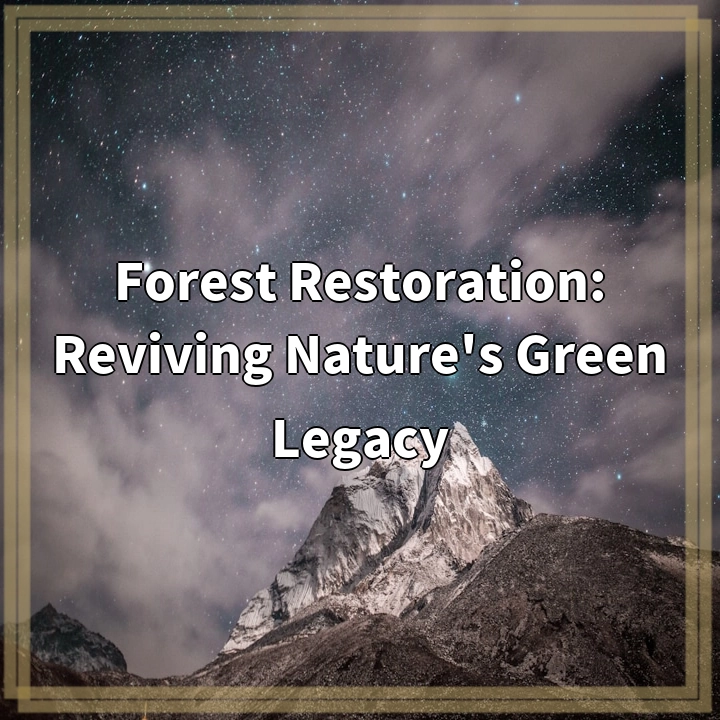Physical Address
304 North Cardinal St.
Dorchester Center, MA 02124
Physical Address
304 North Cardinal St.
Dorchester Center, MA 02124

Forest restoration is an active process of regenerating and revitalizing degraded or damaged forest ecosystems. It involves deliberate and planned efforts to assist natural forest processes by planting trees, removing invasive species, managing wildfires, and rehabilitating land, among other activities. The goal of forest restoration is to enhance the structure, function, and biodiversity of forests, leading to improved ecosystem health and the provision of vital ecological services.
While forest restoration is a critical tool for addressing environmental issues and conserving natural resources, it is not without challenges. Several real-world problems impact the success and effectiveness of forest restoration efforts:
Invasive species can hinder forest restoration by outcompeting native plants and disrupting natural ecosystems. These non-native species often have no natural predators or controls and can rapidly spread, negatively impacting biodiversity and ecosystem function.
The impacts of climate change, such as rising temperatures, altered rainfall patterns, and increased frequency of extreme weather events, pose significant challenges for forest restoration. Changing conditions can affect the selection and survival of tree species, negatively impacting restoration efforts and the long-term resilience of restored forests.
The conversion of forested lands for agriculture, urban development, and other purposes has led to the fragmentation of forest ecosystems. Fragmentation disrupts forest connectivity, diminishes habitat quality, and restricts the movement of plants, animals, and nutrients, making successful restoration more challenging.
Forest restoration requires significant financial investments and resources. Limited funding allocations, competing priorities, and lack of public awareness about the importance of restoration can hinder efforts to scale up restoration activities and achieve meaningful impact.
Forest restoration often involves engaging with local communities, indigenous peoples, and stakeholders. Disputes over land ownership, conflicting interests, limited awareness, and insufficient community involvement can pose hurdles to effective restoration practices and collaborative decision-making.
Addressing the challenges associated with forest restoration requires proactive solutions. Here are some key steps to overcome these obstacles:
Implementing effective control and eradication measures for invasive species is crucial. This can include early detection and rapid response efforts, promoting native species resilience, and enhancing ecosystem monitoring to minimize the impact of invasives.
Forest restoration plans need to consider projected climate change impacts. This involves selecting climate-adapted species and promoting genetic diversity. Implementing adaptive management strategies and conducting ongoing research on climate-resilient reforestation methods are key steps to address this challenge.
To mitigate the negative effects of habitat fragmentation, restoring forest connectivity through reforestation, creating wildlife corridors, and promoting sustainable land-use planning can enhance biodiversity and support ecosystem functioning.
Increasing financial investments in forest restoration is crucial. This can be achieved by leveraging public-private partnerships and raising awareness about the economic and ecological benefits of restoration. Securing the necessary resources will help scale up restoration efforts and achieve meaningful impact.
Building strong partnerships with local communities, indigenous groups, and stakeholders is essential for successful restoration. Engaging in inclusive decision-making processes, providing education and training, and fostering local ownership can enhance social acceptance and support for restoration initiatives.
Forest restoration is a critical tool for addressing environmental issues and conserving natural resources. By implementing proactive solutions and overcoming the challenges associated with restoration, we can revive nature’s green legacy and ensure a sustainable future for our forests.
If you’re wondering where the article came from!
#